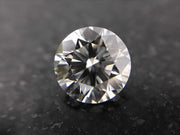Photo: Rich Dieckhoff
Lela London, December 22, 2020
While diamonds may, indeed, be a girl’s best friend, the majority are less-than-fine friends to the environment and everyman.
The enemy, you might say, would be mined diamonds—the production of which not only tends to exploit adults and children in poverty, but enacts environmental devastation to land and water and, in extreme cases, causes entire ecosystems to collapse.
Thankfully, the last decade has presented the world with a growing range of lab-grown diamonds, offering a conflict-free alternative, which display the same physical, chemical and optical characteristics as ‘traditional’ diamonds.
Of course, the fossil fuels used to create lab-grown diamonds come with a significant environmental impact of their own. An impact which, even for brands claiming to be ‘carbon neutral’, isn’t sustainable.
Enter Aether, creators the world’s first carbon-negative diamonds.
“We would be resigning ourselves to a fate less than pleasant if we were complacent with 'carbon neutral',” says Ryan Shearman, climate change campaigner and founder and CEO of Aether.
“If every industry today, across the globe, went 100% carbon neutral, we would not stem the change that's already happening. We would have no hope whatsoever of limiting global warming.”
As a mechanical engineer turned entrepreneur, with a background in material science, jewelry and tech, however, he wondered whether he could help. Perhaps, even, develop technology that grew diamonds by removing CO2 from the air.
When he signed the dotted line on Aether’s founder-funded legal entity, Impossible Diamond, Inc, however, that all-important technology didn’t exist.
"We knew it would be hard, but we knew that the return on investment would be substantial—not only, hopefully, from a financial standpoint but an environmental one,” he says.
Particularly when the diamond trade, as a subset of the larger jewelry industry, is expected to be responsible for at least 12 million metric tonnes of C02 emissions each year.
Even the lab-grown giants.
“There's this element of greenwashing, not only in jewelry but certainly in jewelry, where you have lab-grown brands making environmental claims they can't substantiate,” says Shearman.
“People will say 'we're gonna plant a tree for every diamond ring we sell!', and that's great, but you can plant a tree for $1. We're not really talking about a massive economic impact here.”
Eventually, and proverbially, Aether struck gold.
After years of “blood, sweat and tears!” (ethically-sourced, of course), the founders had fine-tuned proprietary technology which successfully alchemized diamonds from air pollution.
First, atmospheric collectors pull carbon dioxide (CO2) straight from the sky, pulling it into specialized filters.
Next, the captured CO2 is synthesized into a usable hydrocarbon perfect for growing diamonds. After this, the hydrocarbon raw materials are placed into powerful reactors that create the perfect environment for growth.
100% of the energy required from start to finish comes from renewable and low-emissions sources which, despite their carbon-neutrality, doesn’t hinder Aether’s carbon-negative footprint.
"There is a debate in the industry as to what the carbon footprint is of a mined diamond, lab-grown diamond, and you get a lot of squabbling about a couple hundred kilograms of emissions. We flipped that paradigm,” says Shearman.
“We're not going to argue over who's less harmful, we're going to actually be beneficial. Every diamond we produce permanently removes carbon from the environment."
That point of difference has not only led to the creation of an entirely new diamond category, but made a ‘new kid’ an instant pioneers in an innovation-scant industry.
"When I look at other companies that have really nailed the type of positioning that we're going after—Tesla
“There's a little devil with a pitchfork on one shoulder, urging you to do something exciting, and the angel on the other shoulder, trying to get you to do something good. A Tesla automobile appeals to both—and in cartoons, as in real life, when you're appealing to both of those mindsets, it's a no brainer.”
Once carbon-negative diamond production was made possible, they worked to refine the pitchfork appeal further, bringing designer Jenna Housby (of Stephen Webster and Theo Fennell) in to head up Aether’s ethical jewelry design.
Aether’s first collection consists of diamond engagement rings (from the traditional to asymmetrical), wedding bands, diamond studs, extravagant 'ear jacket' cuffs, bracelets, geometric necklaces, and more. All of which have already sold out.
Though the founders would describe their brand as “more of a Tiffany's than a Harry Winston”, they walk a fine line between luxury quality and non-luxury pricing.
Like most lab-grown diamond companies, you get more for your money at Aether.
While Aether uses the same classification scale as mined diamonds—the ‘four Cs’ (color, clarity, cut and carat)—the company will guarantee customers a minimum of their chosen classifications, meaning they might get a 2.07-carat diamond when they order a two, and/or diamonds with upgraded color and clarity.
And with the net impact on a per-carat basis coming in at 20 metric tonnes, a two-carat ring will offset roughly two and a half years of carbon emissions for the average American.
Additionally, Aether has committed to a minimum H color grade (not colorless, but white to the eye) and minimum VS2 clarity (Very Slightly Included) across the board, meaning every piece will be in the top 2% for diamond quality in the world.
The finer details impress, too. With a plant-derived ‘ultra suede’ on the exterior, FSC-certified recycled paper structures, and an interior made from sustainable wool felt, all but the recyclable exterior is biodegradable.
Shearman says Aether wants to continue being the first at everything, including becoming an entirely self-sustaining carbon negative company by 2023 ( “at the absolute latest!”).
The wheels are already in motion to generate their own green energy, send excess to the grid, make their packaging 100% biodegradable and sustainably-sourced, and offset the logistics footprint for shipping and delivery (which is, by nature, otherwise out of their control).
“I mean,” laughs Shearman. “I’m an entrepreneur. I had to do it big.”




